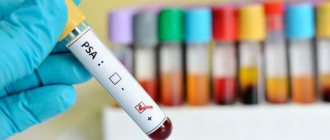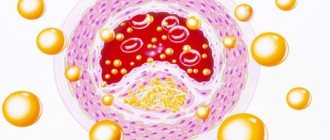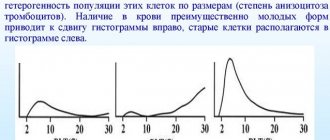Everyone has ever had a test and seen a notice on the laboratory door: “Blood sampling for sugar on Tuesdays and Thursdays” (example text). This means at least two things. Firstly, the glucose level is not detected using a general analysis and needs to be done separately. Secondly, two, and in large cities, three days a week are allocated for this, which means that the demand for this laboratory research is high. This is actually true: today the problem of diabetes mellitus is relevant all over the world.
Every person, regardless of age and health status, should check their blood sugar levels annually to avoid becoming a risk group, much less a diabetic. To do this, you need to know its norm in accordance with your individual characteristics - gender, lifestyle, diseases.
Glycemia
The presence of glucose in the blood is called glycemia. It is considered one of the most important components of homeostasis (constancy of the internal environment).
Functions
Functions of glucose in the body:
- converted to triglycerides and glycogen;
- accumulates metabolic energy for most cells of the body;
- is a vital material for the normal functioning of red blood cells and neurons;
- responsible for brain function and mental abilities.
If blood sugar levels become critically low or high and no action is taken to bring them back to normal within several hours, the consequences can be fatal. The body weakens because the cells no longer receive energy. Red blood cells are destroyed, which has a detrimental effect on the state of the entire blood circulation, and most importantly, the heart. The central nervous system is affected. The brain loses its power source and ceases to function fully.
Properties
A valuable property of glycemia is that it is controllable, so that a person, with the help of modern medicine, can purposefully reduce it, increase it, or bring it back to normal. There are many tools for this: from the most powerful medications to careful selection of food products.
However, this controllability often turns out to be a completely different side. Glycemia is also called one of the most variable values, since it depends on a huge number of factors. Age, degree of physical activity, diet, bad habits, hormonal levels, gender and much more - sugar levels depend on almost any action a person performs.
In a calm, balanced state in the absence of serious illnesses, glucose is within normal limits. As soon as a person eats candy or begins to worry, its level jumps. After the gym or long fasting, it goes down. In the first case, they talk about hyperglycemia, when sugar is elevated. In the second - about hypoglycemia, when it is low.
Although there was a fluctuation in both cases, this does not mean that the person has diabetes or other glycemic-related diseases. Given the circumstances, this is not pathological. Therefore, the standard blood sugar norm, which in many countries is accepted as 3.3-5.5 mmol/l, is a fairly arbitrary framework that can shift in different directions depending on many factors, and this will not be critical indicators, since they are temporary.
Relevance
Unfortunately, recently the number of people diagnosed with diabetes has been increasing around the world. Among them are a large number of children, pregnant women and the elderly. This disease not only reduces the quality of life. It leads to numerous health problems and complications. At any moment it can plunge a person into a coma from which he may never recover.
The worldwide craze for fast food, the frantic pace of life, a state of constant stress, an 18-hour working day, chronic lack of sleep - all this leads to the fact that people's blood sugar levels are violated from an early age. The scary thing is that diabetes is increasingly affecting children and young people. To avoid being one of those who depend on insulin injections or pills every day, you need to regularly monitor your glucose levels and take timely measures to keep them within acceptable limits.
Glycated hemoglobin: normal by age
The norm of glycated hemoglobin does not differ for people of different ages. We need to ensure that this figure is no higher than 5.6%. For diabetic children up to adolescence - preferably no higher than 5.4%, like their healthy peers.
Many older diabetics believe that it is acceptable for them to have higher glycated hemoglobin than younger people. Doctors promote and encourage this view among patients to reduce their own workload. In reality, this is, of course, a sweet lie.
Older people who want to live a long and dignified retirement and avoid helplessness and disability need to keep their HbA1C no higher than 5.5-5.7%. Dr. Bernstein's system, which is described on this site, allows you to achieve this goal. Moreover, you do not have to go on a starvation diet and inject high doses of insulin.
Only diabetics suffering from incurable cancer can come to terms with glycated hemoglobin levels of 7.5% and higher. Such people obviously have a low life expectancy. The terrible complications of diabetes simply do not have time to develop.
All other categories of patients need to make efforts to keep their glucose metabolism under good control. Or, at least, understand the consequences of shortcomings in this matter. Not all diabetics experience a quick and easy death from a heart attack or stroke. Many suffer from blindness, gangrene in their legs or kidney failure. Do not believe in soothing fairy tales that the HbA1C norm depends on age.
Find out more about diabetes:
- Children - causes, symptoms, diagnosis, treatment
- Women - causes, treatment, prevention of complications, features after 40 years
- Men - causes, symptoms, diagnosis, treatment, effect on testosterone levels and potency
- Teenagers - how to monitor, insulin pump, sports options
- Elderly people - causes, symptoms, signs, diagnosis, treatment, folk remedies
Target value for diabetic children
Official standards for glycated hemoglobin in children:
- 4-5.9% - no diabetes
- 6.0-7.0% – good diabetes control
- 7.1-9.0% - poor course of the disease.
Dr. Bernstein does not recommend using the above standards. He found that healthy children had blood glucose levels that were approximately 0.6 mmol/L lower than those of adolescents and adults. In other words, for children, sugar 3.0-3.5 mmol/l is normal, not low. Based on this information, the HbA1C norm for children should be slightly lower than for adolescents and adults. For children, the rate of 5.7% can be considered elevated, and 5.5% is at the upper limit of normal.
Analyzes
To find out whether your sugar level is normal or if there are any abnormalities, a test is taken. To do this, you need to get a referral from a therapist or endocrinologist, or order a paid laboratory test on your own initiative.
From a finger or from a vein?
The analysis can be taken in 2 ways: from a finger (capillary blood is examined) and from a vein (respectively, venous). In the latter case, the results are cleaner, more accurate and permanent, although for the first diagnosis it is quite enough to donate blood from a finger.
It’s worth warning right away that the sugar levels in capillary and venous blood are not the same. In the latter case, its boundaries are significantly expanded, so that the range turns out to be wider, and this should be kept in mind. More precise indicators for both analyzes will be indicated below.
Glucose meter, biochemistry or glucose tolerance?
There are several blood tests that can determine your sugar levels.
Basic:
- biochemical analysis (standard) - carried out in a laboratory;
- express method using a glucometer - ideal for home use.
Clarifying:
- for glycated hemoglobin;
- for glucose tolerance;
- glycemic profile.
Each type of analysis has its own advantages and disadvantages. However, any of them will show deviations from the norm, if any.
How sugar tests are taken, what you need to know to get accurate results, decoding - all this in our separate article.
What to do if glycated hemoglobin is elevated
Glycated hemoglobin can be elevated for many years without causing visible symptoms. In other words, prediabetes or diabetes mellitus can occur in a latent form for a long time. People, as a rule, attribute deterioration in vision and general well-being to natural age-related changes.
Treatment for elevated HbA1C for most patients involves following a step-by-step regimen for controlling type 2 diabetes. This system is also suitable for patients with prediabetes, not just T2DM.
Thin people and children and teenagers need treatment for type 1 diabetes.
To clarify your diagnosis, read the guide to diagnosing diabetes and take additional tests that are listed there.
What are the effects of taking metformin?
Taking the drug metformin in a maximum daily dose of 3 tablets of 850 mg reduces glycated hemoglobin by 1-1.5%, without taking into account the effectiveness of diet, other medications, insulin and physical activity. This is a significant benefit for diabetics, especially since the drug has no dangerous side effects. The video explains more.
Metformin only helps people who are overweight, not thin people with autoimmune diabetes. Often its effect is not enough, and you have to inject more insulin.
The main treatment is a low-carbohydrate diet, and metformin only complements it. It is useless to take these pills while continuing to eat unhealthy foods that are loaded with carbohydrates.
Generally accepted indicators
There is a generally accepted indicator that has been considered the normal sugar level for many decades and which most doctors and patients rely on.
Normal level
The normal sugar level without taking into account additional factors is 3.3-5.5. The unit of measurement is millimoles per liter (mmol/L). If a blood test reveals deviations from these indicators, this becomes a reason for additional medical examinations and laboratory tests. The goal is to confirm or refute the suspected diagnosis of diabetes. Considering that glycemia is an unstable indicator, depending on too many factors, circumstances are identified that could cause a decrease or increase in sugar levels.
Acceptable
In addition to the generally accepted (standard, classical, canonical), there is also an acceptable level of sugar, which is determined by the range of 3.0-6.1 mmol/l. The boundaries are somewhat expanded, since these minor changes in both directions, as practice shows, are not symptoms of diabetes. Most often, these are consequences of a recent heavy meal, a stressful situation, a 2-hour workout and other provoking factors.
Critical
The lower bar is 2.3, the upper bar is 7.6 mmol/l. With such indicators, processes that destroy it are launched in the body, which are irreversible. However, these boundaries are very conditional. For diabetics, the upper level can be 8.0 and even 8.5 mmol/l.
Fatal
The “first” fatal sugar level is 16.5 mmol/l, when a person can fall into a precoma or even coma. The risk of death for those who find themselves in a coma with such data is 50%. However, as practice shows, some diabetics may not feel such an increase at all, continuing to do their usual activities. In this regard, there is a concept of a “second” fatal level of sugar, but there is no unity on this issue in the medical field; different numbers are cited - 38.9 and 55.5 mmol/l. In 95% of cases this leads to hyperosmolar coma, which in 70% is fatal.
Why are sweeteners dangerous?
To understand whether a sugar substitute is harmful, you need to know everything about sugar substitutes, the benefits and harms of which are relative concepts. All sweeteners contain substances that have a strong sweet taste and can sweeten drinks and foods. These include sodium cyclamate, aspartame, sucralose, acesulfame potassium and others. All these substances, when entering the body, are broken down and create dangerous compounds, known as carcinogens that can cause the development of cancer. They are especially dangerous in case of overdose, so synthetic sweeteners are strictly forbidden to be given to young children. Is fructose harmful to the body? - is also a controversial issue. But it is not absorbed by itself and the load falls on the liver.
For healthy people, the daily requirement of Fructose, in the form of fruit or honey, is approximately 50 grams per day. About half of sugar is fructose.
The safest, healthiest, and not containing a single calorie, is the natural sweetener – stevia. It is indicated not only for diabetics, but also for those losing weight and absolutely healthy people. Regular consumption of stevia in food will help not only reduce sugar after meals, but also say goodbye to excess weight.
Useful articles
- Anatomy of a healthy diet
- Healthy eating is the main step to losing weight
- Beneficial regime: daily routine of a successful person
- Valeology: the science of a healthy person
- The influence of physical education on human life and health
- Factors promoting health
- Secrets of Japanese and Chinese centenarians
- Recommendations for improving health from experts
ul
Normal blood sugar
To determine the sugar level or monitor the progress of treatment, it is necessary to perform an appropriate blood test using a glucometer or in the usual laboratory way. Blood sampling can be done from the ring finger or vein. In the first case, the blood is called capillary because it is taken from small vessels - capillaries, and in the second case - venous. It must be taken on an empty stomach.
Blood sugar standards are approved by the World Health Organization and depend on what kind of blood is taken for analysis: capillary or venous. Capillary blood is more informative in this matter.
Adults
- capillary blood: 3.5-5.5 mmol/l (according to another system - 60-100 mg/dl).
- venous blood: 3.5-6.1 mmol/l.
- A blood sample taken after a meal will show a higher blood sugar level. A result of up to 6.6 mmol/l is considered normal, not higher.
Important! The result may be influenced by the following factors not related to pathological conditions of the body:
- chronic lack of sleep;
- stress;
- exacerbation of chronic diseases;
- pregnancy;
- smoking - both in general and immediately before blood sampling;
- internal diseases.
Frequency of blood sugar tests
- persons over 40 years old - once every six months;
- for patients at risk - once every 3 months;
- for patients with diabetes - on the recommendation of a doctor.
Pregnancy
Sugar control is necessary because it allows you to monitor the condition of the woman and the developing baby. During pregnancy, the tissue receptors of a pregnant woman are more sensitive to insulin, so the permissible range of blood sugar levels is slightly higher: 3.8-5.8 mmol/l. If the value is more than 6.1 mmol/l, a “Glucose Tolerance” test is required.
Sometimes, in the sixth month of pregnancy, gestational diabetes develops, in which the tissue receptors of a pregnant woman become insensitive to insulin produced by her own pancreas. In some cases, gestational diabetes may disappear after childbirth, but sometimes it develops into a full-fledged disease, especially with obesity or a hereditary predisposition. In this case, the woman should monitor her blood sugar and receive treatment.
Menopause
At this time, serious hormonal changes occur in the human endocrine system, so blood sugar levels may be elevated.
Children
Norms change with age:
- 2 days - 1 month - 2.8-4.4 mmol/l;
- 1 month - 14 years - 3.3-5.5 mmol/l;
- over 14 years old - 3.5-5.5 mmol/l.
ul
Important! How to use the glucometer
- Turn on the device (do not forget to keep spare batteries ready so that you can easily and quickly replace them if necessary).
- Wash your hands with soap and dry them. Wipe your finger with alcohol, dry it and stretch it.
- Make a puncture on the side of the pad of the middle or ring finger using the needle that comes with the device or is sold separately at the pharmacy.
- Remove the first drop of blood with cotton wool and place the next drop on the test strip.
- Insert it into the glucometer to determine the result (the numbers on the display indicate the amount of sugar, that is, glucose compounds in the blood).
- Record the result in the “Diary of monitoring the dynamics of the disease and ongoing treatment.” Do not neglect it: glucometer readings will help manage the disease.
Measurements are taken in the morning, immediately after waking up. Avoid eating breakfast, brushing your teeth, and exercising because any physical activity lowers your blood sugar.
It should be taken into account that the reference values of glucometers differ depending on the country of manufacture of the glucometer. In this case, tables are attached to help convert the obtained values into the values accepted in Russia.
The advent of glucometers is an important moment for diabetics: without reliable knowledge of blood sugar levels, insulin administration is prohibited. When glucose levels are low, they can be deadly.
ul
Complications of diabetes
Diabetes causes damage to small vessels - capillaries - in various organs. As a result, their blood supply is disrupted, and therefore nutrition. This causes serious complications:
- eye disorders: retinal hemorrhages, blepharitis, cataracts, glaucoma and blindness;
- renal disorders: chronic renal failure and uremia;
- disorders associated with the lower extremities: gangrene of the fingers and toes, as well as gangrene;
- plaque formation in large vessels (aorta, coronary arteries and cerebral arteries);
- polyneuropathy is a dysfunction of peripheral nerves. Patients feel numbness, a crawling sensation, cramps, pain in the legs, especially at rest, so they decrease when walking. Sometimes disorders associated with urination develop, and men are concerned about problems with potency.
Factors affecting sugar levels
What can affect test results:
- type of blood: venous is purer than capillary and allows for more expanded boundaries of the generally accepted norm;
- type of analysis: biochemical is more accurate than a glucometer (a home device allows up to 20% error), while the rest are completely clarifying and focus on individual indicators;
- presence of disease: normal blood sugar will be different for diabetics and healthy people;
- eating: on an empty stomach there will be some results, immediately after eating - others, a couple of hours after it - others, and you need to know which of them correspond to the norm and which are a deviation;
- age: newborns, adolescents, adults and the elderly have different glucose concentrations;
- gender: there is an opinion that standards for women and men should be different;
- pregnancy: while carrying a baby, a woman’s blood sugar rises.
These factors clearly influence glycemia. But there is another group of factors that sometimes affects sugar levels and sometimes not. Scientists cannot yet identify patterns why they cause an increase in some people, a decrease in others, and nothing changes at all in others. It is believed that the matter is in the individual characteristics of the body. Such circumstances include:
- stress;
- climate change;
- taking certain medications;
- chemotherapy;
- intoxication of the body;
- infections, inflammation, diseases of the pancreas, liver, kidneys and other organs;
- genetic pathologies;
- poor nutrition, sugar abuse.
Someone eats chocolate and candies in unlimited quantities almost every day all their life and does not get fat or get diabetes because of it. For others, this sweet craving leads to obesity and hyperglycemia. And it works for all the above factors. Some may come to test their blood sugar before the exam, and, despite the excitement, the analysis will show the norm. For others, it’s enough to have an argument with someone in line and the glucose level will jump sharply (and for some it will drop).
Depending on the analysis
First of all, the sugar level will be determined depending on what kind of blood will be examined. Generally accepted indicators (3.3-5.5) are established for glucose contained in blood from a finger prick, since this analysis is performed most often, it is faster and less painful. Despite the small errors and impurities that are detected in the collected material, the results obtained allow us to assess the patient’s condition. With their help, the doctor can already specify the problem (hyper- or hypoglycemia).
Less commonly, a test is prescribed that detects the sugar content in the blood from a vein. It is more detailed, extended and painful, so it is not performed as often, despite more accurate results. This is explained by the fact that venous plasma is characterized by greater biochemical stability and purity than capillary blood. For this laboratory test, the norm is slightly different indicators - 3.5-6.1 mmol/l.
An auxiliary factor is the duration of food intake, which the doctor must take into account when drawing blood from both a finger and a vein. To avoid confusion, it is for this reason that patients are asked to take the test early in the morning on an empty stomach. But sometimes there is a need to check the glucose concentration at different times of the day, and for such cases there are also standards and deviations. They are verified according to the following table.
If before taking the test (no matter from a finger or from a vein) you felt uncomfortable for some reason, were worried, or ate something, be sure to inform the nurse about this, even before she takes the blood. The results may depend on this.
If you do the test yourself using a glucometer, keep two things in mind. First, the indicators must be compared with the first column of the table above. Secondly, a laboratory analyzer, which is used for research in a hospital, and a portable device for personal use produce results, the difference between which can be up to 20% (this is the error of home devices). It can be clearly seen in the table:
20% is too big of a difference and may skew the actual results in some situations. Therefore, when measuring yourself, you need to know what the error of your glucometer is, so as not to panic if suddenly an hour after eating it shows you 10.6 mmol/l, which does not fit into the normal range.
Blood Sugar Tables
Below are summary tables with information about the concentration of sugar in the blood and its significance for human health.
Note! The information presented is not 100% accurate, since each patient is individual.
Blood sugar norms - table:
| Patient category | Norm |
| Adults | 3.5-5.5 mmol/liter |
| Newborn babies | 2.8-4.4 mmol/liter |
| Children aged 1 to 5 years | 3.3-5.0 mmol/liter |
| Children over 5 years old | 3.5-5.5 mmol/liter |
| Pregnant women | 3.8-5.8 mmol/liter |
Normal blood sugar levels and deviations from it with a brief description:
| Blood Sugar Level | Index |
| Less than 3.9 mmol/liter when tested on an empty stomach | Falls within normal range, but is considered low |
| From 3.9 to 5.5 mmol/liter when analyzed on an empty stomach | Normal glucose level for an adult |
| From 5.6 to 6.9 mmol/liter when analyzed on an empty stomach | Elevated sugar levels, more than 6 mmol/liter - prediabetes |
| 7 mmol/liter or more, indications based on 2 or more tests | Diabetes |
| From 3.9 to 6.2 mmol/liter when analyzed after meals | Normal sugar level |
| Less than 3.9 mmol/liter, test readings after meals | Hypoglycemia, initial stage |
| 2.8 mmol/liter when analyzed on an empty stomach | Hypoglycemia |
| Less than 2.8 mmol/liter | Insulin shock |
| 8 to 11 mmol/liter when tested after a meal | A condition close to the development of diabetes mellitus |
| More than 11 mmol/liter when analyzed after a meal | Diabetes |
Blood glucose concentration values relative to health risks. Values are given in mmol/liter, mg/dl, and for the HbA1c test.
| Blood Sugar Level | HbA1c test | mmol/liter | Milligram/deciliter |
| Short | Less than 4 | Less than 65 | Less than 3.6 |
| Optimal-normal | 4,1-4,9 | 65-97 | 3,8-5,4 |
| Good borderline | 5-5,9 | 101-133 | 5,6-7,4 |
| There is a health risk | 6-6,9 | 137-169 | 7,6-9,4 |
| Dangerously high blood sugar | 7-7,9 | 172-205 | 9,6-11,4 |
| Possible complications | 8-8,9 | 208-240 | 11,6-13,4 |
| Deadly dangerous | From 9 and more | 244-261 | From 13.6 and more |
In the presence/absence of diabetes
The sugar concentration in a healthy person can differ significantly from the limits established for diabetes. In the latter case, the patient's age is also taken into account. The higher it is, the more pathologies develop against the background of the disease, which significantly worsens the results. This is clearly demonstrated in the table.
Depending on the meal
Glucose enters the bloodstream after carbohydrates are digested and broken down in the gastrointestinal tract. Therefore, the results of the analysis directly depend on when it is done:
- on an empty stomach or after eating;
- how long the person has not eaten (2 hours or 8);
- what exactly did he eat before: only protein and fatty foods or carbohydrates;
- If carbohydrates, which ones: fast or slow?
Generally accepted standards are prescribed for analysis taken in the morning on an empty stomach. However, such results may also have errors. Some people (and there are quite a few of them) experience slightly elevated sugar levels immediately after waking up. This is explained by the fact that from 3.00 to 4.00 hours growth hormones are activated, which block insulin, which transports glucose from the blood into cells. However, during the day the indicators level out. This must be taken into account.
If a person did not eat carbohydrate foods and then got tested, he will have a very slight increase in sugar (literally by one or two tenths of mmol/l). If he ate slow carbohydrates (vegetables, greens, unsweetened fruits), this figure will gradually increase over 2-3 hours while the food is digested. If it is fast (sweets, bread), there will be a sharp jump.
But the sugar level after eating is definitely higher than on an empty stomach.
To find out what exactly dictates the increased sugar content, the analysis can be carried out several times during the day, such as a tolerance test. First, blood is taken on an empty stomach, then the patient is given a concentrated solution of glucose (pure simple carbohydrate) and taken again, but a couple of hours after that.
The norms and deviations associated with this factor can be tracked in the following table. It also takes into account the presence/absence of diabetes, its type and how much time has passed since eating.
Most often, 2 blood tests are done - when a person is hungry and 2 hours after eating, to view the dynamics of indicators and compare them with generally accepted standards.
If a glucose tolerance test is performed, which confirms or denies the presence of latent or overt diabetes, they focus on the following indicators:
When testing for glucose tolerance, the level of glycated hemoglobin is also necessarily taken into account, which also confirms or refutes doctors’ fears about the main diagnosis.
Age indicators
In children
In newborns, the absorption rate of glucose is quite high, so its concentration is normally significantly lower than in older children. After a year, if the child is healthy, the indicators level out and are on par with adults. This is clearly demonstrated by the table by age:
Adolescents may experience certain fluctuations from the norm due to puberty and hormonal levels. However, this does not mean at all that deviations at this age are natural and should not cause concern among parents. Unfortunately, it is from 12 to 17 years of age that the risk of juvenile and MODY diabetes increases. Therefore, a blood sugar test should be performed regularly (recommended annually).
In children diagnosed with diabetes, blood sugar levels are determined by different norms and abnormalities. They can be traced in a table that takes into account factors such as the form of the disease and the time of analysis.
Parents should coordinate any changes in these indicators with their attending physician.
In adults
The norm in adults, if they do not suffer from diabetes and are not predisposed to it, remains quite stable for a long time. This can be tracked in the table by age:
After 50 years, the aging process leads to disturbances in the functioning of the pancreas and changes in hormonal levels. Because of this, the sugar level increases slightly, but for this age it still remains the norm. The older a person is, the more the indicators shift. Therefore, for the elderly, these values are somewhat different from those indicated for the younger generation. This can be seen from the table.
Gender indicators
A number of researchers believe that blood sugar levels should be different for men and women. The latter are more prone to hyperglycemia and diabetes due to frequent hormonal changes (during pregnancy, after childbirth, during menopause) and cravings for sweets. The table by age will demonstrate gender differences in performance.
Among women
In women over 50 years of age, in 50% of cases there is slight hyperglycemia due to menopause. This often leads to the development of type II diabetes.
In men
Men over 50 years of age are less likely to experience hyperglycemia. In them, type II diabetes is diagnosed mainly after 60.
Symptoms
Signs of high glucose do not appear immediately. In the early stages, the symptoms are very vague and unnoticeable, so the ability to start treatment on time is greatly reduced; it is necessary to undergo tests. If you notice one of the following manifestations of pathology:
- Constant strong thirst. This is the main and main sign of hyperglycemia; a person is constantly thirsty. This is due to the ability of glucose to draw water from the peripheral organs of tissues. When the sugar value is 10 mmol, it enters the urine and captures water molecules. This leads to frequent urination and dehydration.
- Dry mouth becomes a consequence of the previous symptom.
- Headache occurs when important electrolytes are removed from water and dehydration occurs.
- Skin itching, numbness, tingling of fingers and toes.
- Extremities that are cold to the touch, pain when moving. This symptom becomes a consequence of impaired blood supply and microcirculation in the extremities.
- Decreased vision.
- Problems with the gastrointestinal tract (diarrhea or constipation), loss of appetite.
- Increased body weight due to insufficient insulin action
- Development of nephropathy (kidney disease).
Among women
Most of the symptoms, if sugar is high, are the same in men and girls. There are also a number of characteristics that are more characteristic of a particular gender. These for women include:
- dry skin, it becomes rough and itchy;
- itching of the skin in the intimate areas;
- hair loss, brittle nails;
- even small wounds do not heal well, there is a risk of developing pyoderma (a purulent, inflammatory skin disease), a fungal infection is possible, blisters appear on the extremities;
- manifestation of neurodermatitis;
- nephropathy often occurs;
- allergic rashes on the surface of the skin.
In men
The clinical picture in the male half of the population is similar to the general signs of pathology. There are some differences that are unique to guys. The following symptoms are identified:
- severe itching in the anus, groin area;
- the development of neuropathy, angiopathy leads to impaired potency;
- the foreskin may become inflamed due to frequent urination;
- decreased performance, increased fatigue;
- low level of regeneration;
- arterial hypertension;
- constant weight gain.











